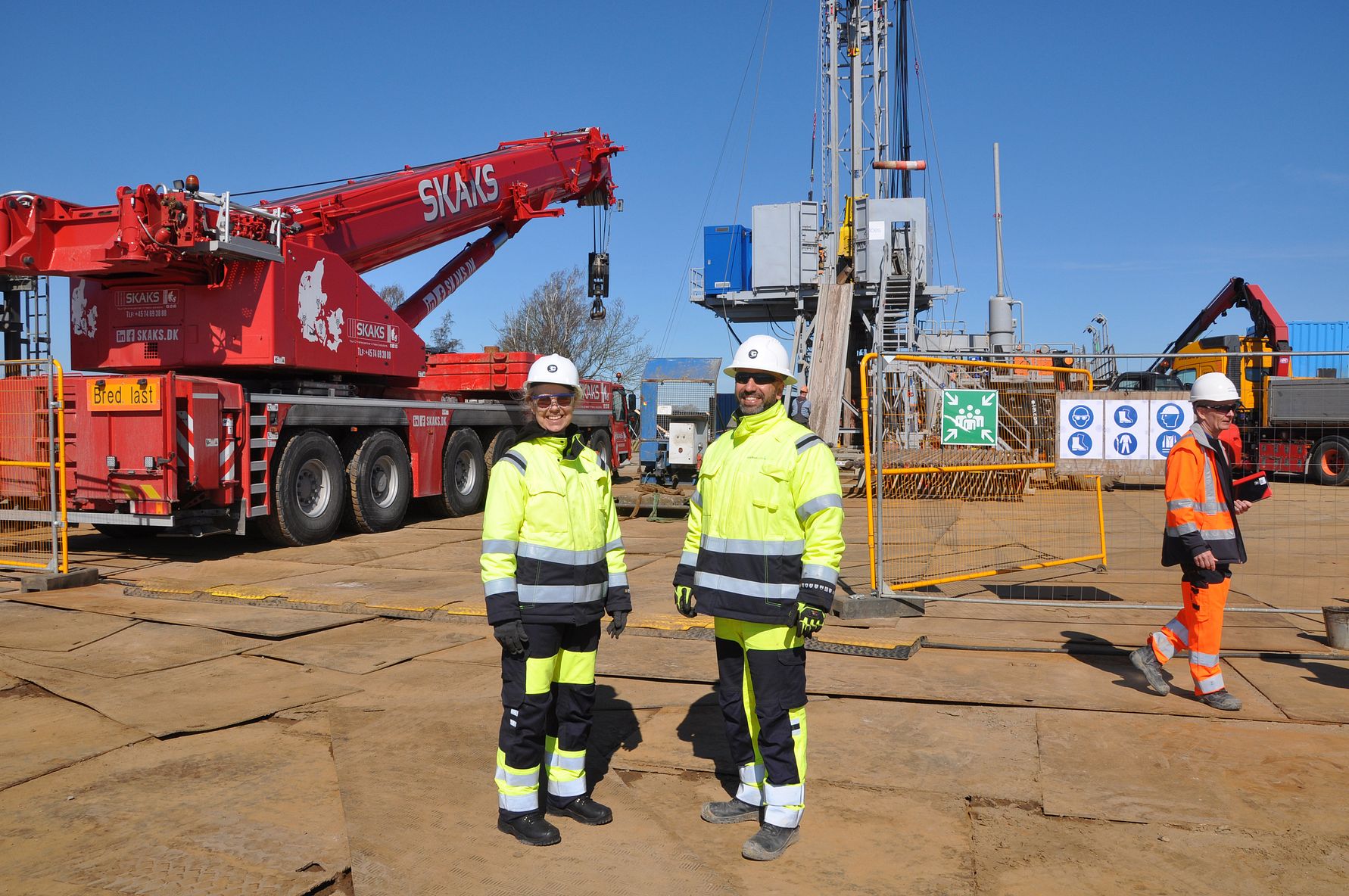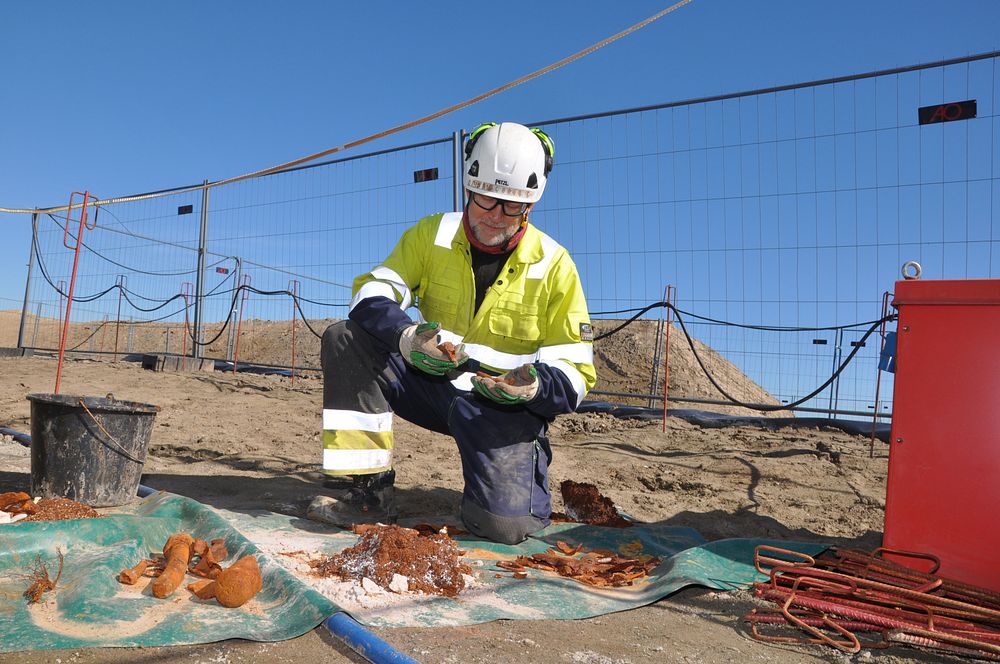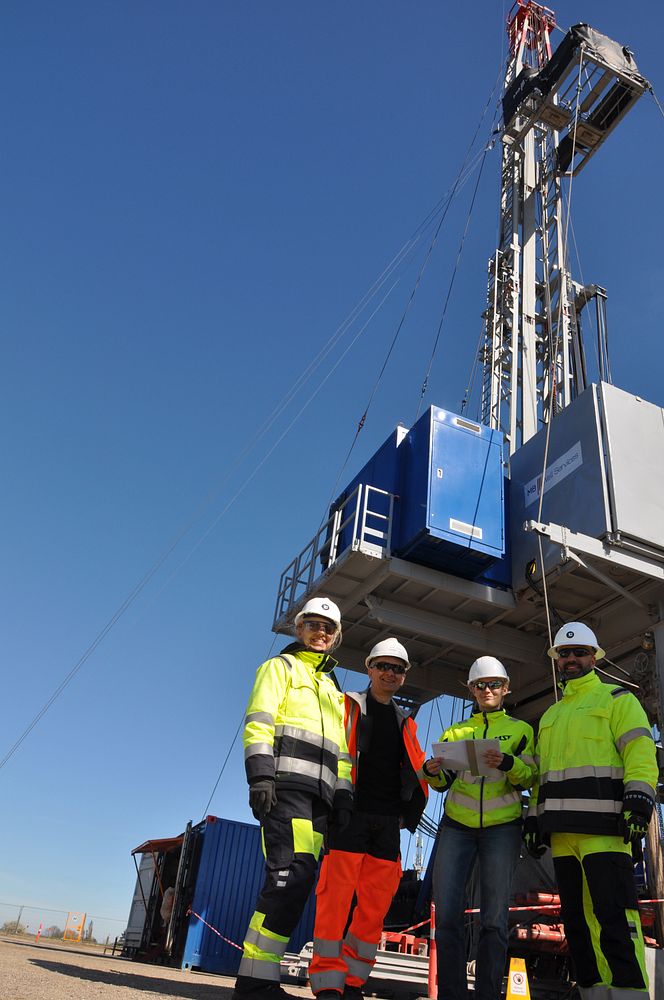From historic exploration well to one of the climate solutions of the future: Project Ruby completes successful reopening of the Rødby 2 well at Næsbæk

A field near Næsbæk between Rødby and Holeby has only been used for agriculture for decades. The field has lain quiet and untouched since an American-Danish oil company drilled a deep well both here – and elsewhere not far away – in 1953 in search of oil. Back then, nothing of value was found, abandoned and both wells were capped again. It looked like an ending. No one could have known that Project Ruby would come to the site more than 70 years later to investigate the suitability of the Lolland underground as a future CO2 storage facility.
In February 2025, there was activity in the field again – this time with a completely different purpose: to reopen the Rødby-2 well as part of a larger investigation of the subsoil in southern Lolland. Now, 72 years after it was drilled, CarbonCuts, the company behind Project Ruby together with Nordsøfonden, has reopened, investigated and temporarily closed the well again. But now with important new knowledge that can have an impact on Denmark’s climate efforts and the local green transition.

Photo: the drilling rig – built for the job – arrives from Germany by ferry in February.
It has been a technically complex operation, working in unknown terrain and with a well that has not been opened for over 70 years. Despite unforeseen discoveries in the depths of the well – including abandoned scrap metal from the 1950s – all project goals have been met safely and with high uptime for the new purpose-built German drilling rig
“You never knowwhat you’ ll find when you go deepinto an old wellthat hasn ‘t been opened since the 1950s,” says Aymen Abouardini, Wells Manager at CarbonCuts. “But we’ ve now completed a thorough and safere-entry, and the well is in surprisingly good condition – actually better than what you ‘ d expectgiven the quality of steel and cement of the time.”
A demanding job in unfamiliar terrain
It was not an easy task. Already last year, the well was located and the detailed planning work began – the well site itself was constructed by local construction company MSE. In February this year, a newly built 36 meter high drilling rig was shipped from Germany and set up on site. Over 57 days, specialists and technicians from WellPerform, MB Well Services, MSE, Sirius, German Fishing Tools, Halliburton and others worked to access the depths of the well and safely complete the planned investigations
“It was an operation that required precision, professional cooperation and a lot of patience,” says Aymen. “Among other things, we found large amounts of old metal that was probably left as waste at the bottom of the well back in the 50s. We were able to remove it with a giant magnet, and we’ve actually given some of the metal to a local artist – we can’t wait to see what comes out of it! ”

Photo: examples of metal finds in the old well, which must have served as a waste shaft before it was sealed off and abandoned in 1953 when no oil was found at the site.
Despite the challenges, all objectives of the reopening were met, although the schedule slipped a few weeks. The entire operation was completed without any safety or environmental incidents – and with very little downtime, even though the rig was brand new.
This is the first time in Denmark that such an old onshore exploration well has been reopened for this purpose
“This is an important milestone – both for us, our partners and for the entire CO2 storage industry, and we would like to thank all our skilled, dedicated specialists and technical partners for a safe, professional, and well-executed job, where the safety culture has been in focus every single day,” says Charlotte Laurentzius, Head of Exploration at CarbonCuts.
From oil exploration to climate solution
The purpose of the reopening was not to find oil – but to gain important new knowledge about the subsurface. On South Lolland, there is a special geological formation that can potentially be used for safe and permanent storage of CO2. GEUS has previously identified the area as suitable, and in June last year, CarbonCuts was awarded an exploration license by the Danish state to further investigate the potential over the next few years.
By opening Rødby-2, CarbonCuts has now been able to check the technical condition of the well and at the same time retrieve data on the geological layers at a depth of up to 1,650 meters.
“We have examined the layer thickness of the geological formations, the condition of the casing in terms of possible corrosion and metal thickness and cementing on the outside of the casing,” explains Charlotte. “This is all to ensure that we have the best possible data basis before we assess whether the area can be used for CO2 storage from 2030 onwards. If successful, South Lolland can play a key role in Denmark’s green transition.”
The well is now securely closed with a mechanical barrier at a depth of 1,640 meters and aChristmas tree on the “surface” – a valve structure that both seals the well and allows it to be opened again. Project Ruby is now leaving the site and cleaning up nicely, and CarbonCuts will return to the field at Næsbæk this summer. Next time it will be without a drilling rig, but with advanced measuring equipment that can use a crane and logging tools to analyze the subsurface in even greater detail.
Patient neighbors andrespect for the surroundings
Drilling can be visible and noticeable – especially when you live close by. That’s why CarbonCuts has focused on informing neighbors and minimizing inconvenience during the work. Among other things, noise-reducing barriers and screens were set up around the well site.
“We would like to send a big thank you to the neighbors and landowners who live close to the site. We have experienced great kindness and patience, and we have also had several people visit us so they could see what we were doing up close,” says Aymen. “We know that having a drilling site as a neighbor can be an unusual experience, and we hope the neighbors can feel that we have made an effort to complete the work respectfully and safely.”
Now that CarbonCuts is moving out, Energinet will soon take over the area to dig down cables to reinforce the electricity grid and power supply for the Fehmarnbelt link.
CarbonCuts will return this summer with new surveys – this time with advanced logging equipment to retrieve even more important information about the geology underground.
Facts: Why Rødby-2 was reopened
- The well was originally drilled in 1953 by the Danish-American company Danish American Prospecting Co.
- It is located in the middle of the geological formation in the subsurface, the Rødby structure, which Project Ruby has a license to investigate whether it is suitable for CO2 storage.
- The purpose of the study was to clarify whether the subsurface layers – especially the sandstone layers at a depth of approximately 1,200 meters – have the necessary thickness, porosity and stability that storage will require.
- The results will help form the basis for a possible decision to establish a CO2 storage facility from 2030.
- The well can be used for monitoring in the future if the project is realized.
- The well opening was carried out by CarbonCuts with WellPerform as project manager, MB Well Services GmbH, Halliburton, Sirius, German Fishing Tools, Robhke, DrillQuip, CS vagt, the local company MSE and other smaller partners.

Photo: Blue skies and happy smiles after a strong team effort across many teams and successful reopening.


